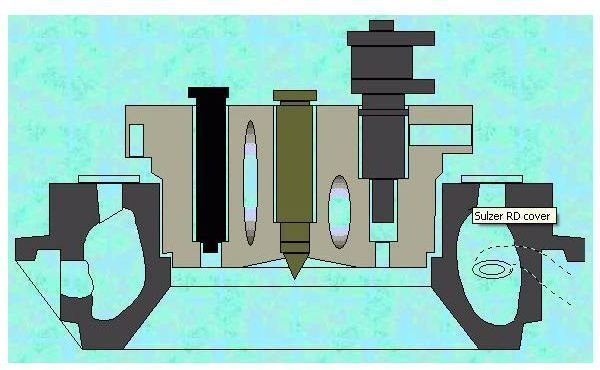Marine Diesel Engine Components – The Cylinder Head
Introduction
After taking a look at the cylinder liner, its construction and inspection in marine diesel engines, we now take a look at an important component namely the cylinder cover which is also popularly known as the cylinder head and will take a look at it in this article.
Cylinder Head/Cover
As the name itself implies the cylinder cover is used to cover the top portion of the cylinder liner and hence also known as head (being the top most portion corresponding to the head in the human body). The various functions of a cylinder head are as follows.
They act as a cover for the combustion chamber thereby providing an enclosed space where the combustion can take place in the internal combustion engine.
They have several mountings on them which could vary with the make and model of the engine by typically these could include starting air valve, fuel valve, relief valve and so forth.
Since the junction of the cylinder cover lower side and the piston crown decides the shape of the combustion chamber they have to be designed adequately for proper combustion to take place
All these factors make the manufacturing and operation of the cylinder head a fairly difficult task. Moreover due to the operating conditions the cylinder cover is exposed to high levels of mechanical and thermal stresses.
The diagram below shows a cylinder head for a typical Sulzer RD marine diesel engine which shows the various valves such as the fuel injector, air starting valve etc, as well as the cooling water passages. The cooling water passage is fitted with zinc rings which act as a protection against corrosion as they get corroded to save the cover body. The earlier designs used a two piece design construction where the two pieces were made out of cast iron and cast steel but recently single piece cylinder covers made out of cast steel have also become fairly popular.
The cylinder head is fixed onto the cylinder block through the use of big bolts which are sufficient to withstand the various forces. They also help to transfer to gas forces acting on the cylinder head to the bedplate via the cylinder block and ultimately are passed on to the hull of the ship.
Cylinder Head
Defects and Care
Given the extreme working conditions the cylinder head is subject to various defects such as corrosion, scaling, sludge formation and so on. It is not possible to entirely eliminate these defects owing to the harsh working environment of a cylinder cover, yet their life can be increased by using properly treating the cooling water, prevention of fouling of cooling spaces and techniques of a clean combustion.
References
Image of Sulzer RD Cylinder Cover: Brian Beattie’s Marine Engineering Website
